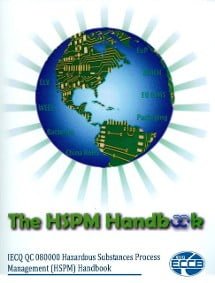History and Development of IECQ Hazardous Substances Process Management (HSPM)
Everybody is talking about “green” these days. People are building “green houses,” companies are going “green,” and publications are spotlighting the shift toward sustainability. Some regions of the world not only encourage but require “green products” be sold. What does “green” mean, and how does it affect your company’s products?
When it comes to the products your company produces and sells to your customers, the real issue is what type and how much hazardous substances are included. Customer demand for hazardous substance-free (HSF) products is changing the global market. Numerous international regulations now exist that restrict the types and amounts of hazardous substances that can be contained in a product, with severe financial and legal penalties involved for any violation of these regulations.
This growing awareness, supported by widespread coverage in influential publications, is providing significant incentive for a majority of companies to seriously evaluate their liability concerning hazardous substances and to begin implementing policies and practices that will reduce or eliminate any potential current or future liability.
The two most recognized regulations today are ROHS and WEEE. ROHS is the restriction of the use of certain hazardous substances for electrical and electronic products and WEEE concerns the waste of electrical and electronic equipment. The easiest way to think about the two regulations is ROHS is concerned with what substances go into the product and WEEE is concerned about what substances are in the product once it’s thrown away.
The following list describes the products that are required by ROHS to be free of hazardous substances:
Categories of Products Covered by RoHS
- Large household appliances
- Small household appliances
- IT and telecommunications equipment
- Consumer equipment
- Lighting equipment
- Electrical and electronic tools (with the exception of large-scale stationary industrial tools)
- Toys, leisure and sports equipment
- Medical devices (with the exception of all implanted and infected products)*
- Monitoring and control instruments*
- Automatic dispensers
